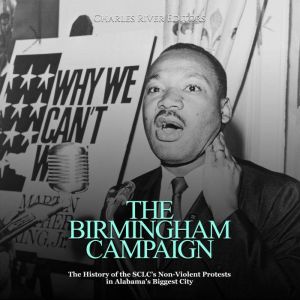
List: $6.95
| Sale: $4.87
Club: $3.47
The Birmingham Campaign: The History of the SCLC's Non-Violent Protests in Alabama's Biggest City
Author: Charles River Editors
Narrator: KC Wayman
Unabridged: 1 hr 43 min
Format: Digital Audiobook Download
Publisher: Charles River Editors
Published: 05/07/2022
Category: History - United States - 20th Century
Synopsis
Today every American is taught about watershed moments in the history of minorities’ struggles for civil rights over the course of American history: the Civil War, Brown v. Board of Education, Rosa Parks’ refusal to give up her seat, Dr. Martin Luther King, Jr.’s “I Have a Dream” speech, and the passage of the Civil Rights Act of 1964. Indeed, the use of the phrase “Civil Rights Movement” in America today almost invariably refers to the period of time from 1954-1964. However, the Civil Rights Movement actually came into existence long before it is presumed to have done so. The movement's primary work was slow, evolving, gradual and long-term. Its more glamorous moments, such as the Montgomery Bus Boycott (1955–1956), the Selma to Montgomery March (1965), and the March on Washington (1963), mainly were supplemental to the all-important grassroots work already going on in communities, churches, legislatures, and courts. The nascent stages of the movement actually began far earlier, among abolitionists and the writings and activism of Frederick Douglass and others. Beginning in the summer of 1962, King and the Southern Christian Leadership Conference (SCLC) began to express interest in targeting one of the South's most brutally segregated cities. Nicknamed “Bombingham,” the city had witnessed the bombing of over a dozen black homes and churches in the previous five years. A victory in Birmingham was a goal that would embolden the Civil Rights Movement like never before.